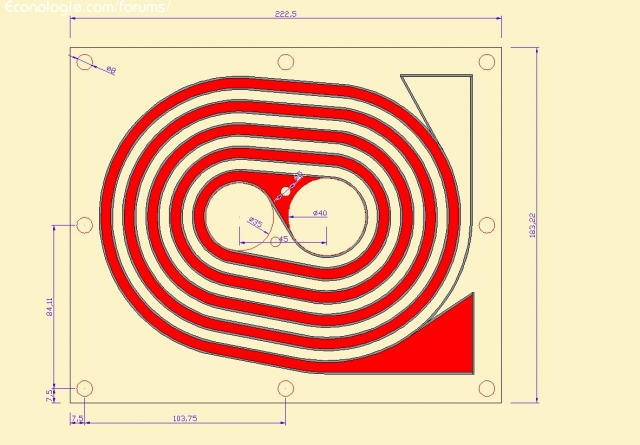We began to tinker with a system of our design inspired by the patents of Pogues, Chambrin and so on.
A little reminder for those who do not know it:
An internal combustion engine has a poor yield, of the order of 30%. And yes, 70% of the gasoline you put in is wasted!
Several reasons which will retain it: Burning time too short, essence in liquid form (not good!), Architecture more than outdated of our old piston engines.
Basically, a big chunk of the yield goes directly by the escape.
Our goal: to recover these wasted calories to send the engine not gasoline in liquid form but "something else", surely gasoline cracked in the form of hydrogen and carbon. How? 'Or' What ? At the exit of the exhaust we have approximately (engine under load) 700 °. At this temperature, gasoline dissociates by thermolysis. However, we know that water can also dissociate by thermolysis from 700 °. What we also know is that in the presence of carbon, it can dissociate at much lower temperatures. As gasoline is composed of hydrogen and carbon, we can therefore consider passing water through our system.
So it is a heat exchanger / admission heat exchanger.
Pogues, it's a little complicated since it just made a carbu !! having neither the technical means nor math spe, we will just be inspired by the spiral ...
Chambrin is an exchanger. We will retain the principle but not the form, too complex and not necessarily as effective as ours.
Pantone is all about it. But we will remember that the heat exchange is far too short (in distance) so surely less effective (on paper at least) compared to ours.
Here is how it looks like:

We have 2 spirals in one another. Red is lechapment. It comes out of the engine and comes directly to the center of the device. In the hole of 40mm of diameter.
The other spiral is admission. The flow is reversed to increase the exchange. Admission starts at the opposite end of the center (top right on the diagram) to get to the center and enter the engine.
For that, we used 2 thick 5mm steel plates taking in sandwish a sheet of 4m long and 8 / 10 thick !!! is an exchange length of 2m !! We are far from the few cm of pantone
To seal, we put up and down joints.
To format the 8 / 10 sheet of mm, I had a colleague break a Forex plate, a rigid white PVC outlet.
The sheet was then shaped and welded legs to keep it in shape once demolded from the forex.
We test on a 1.6L lada motor placed on the ground.
This weekend we could do a blank edit. We still have to connect the escape to the device and review the tightness of the spiral, because it pisses the gasoline and the engine coughs but does not start.
Here are the photos in bulk as well as the plan autocad du bignou:
http://sdch2o.free.fr/vrac/superCarb/essais/
Oh yes, we use 2 carbs, 1 for water, and the other for gasoline
You will excuse the poor quality of these photos but I only had my phone on me
ndc




